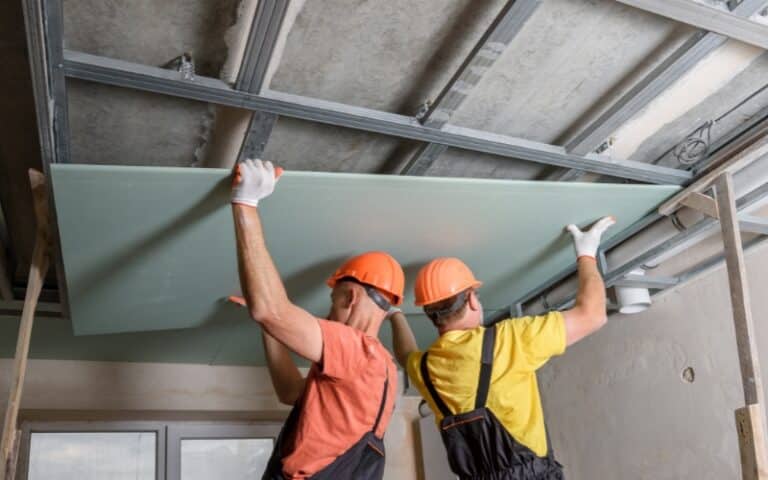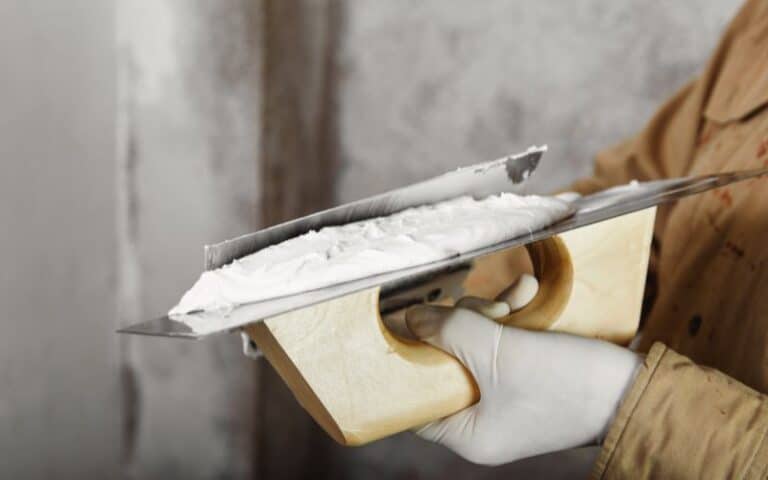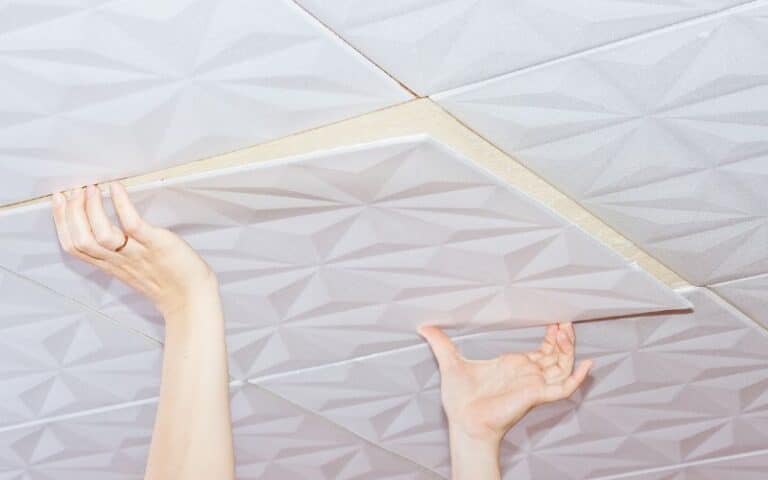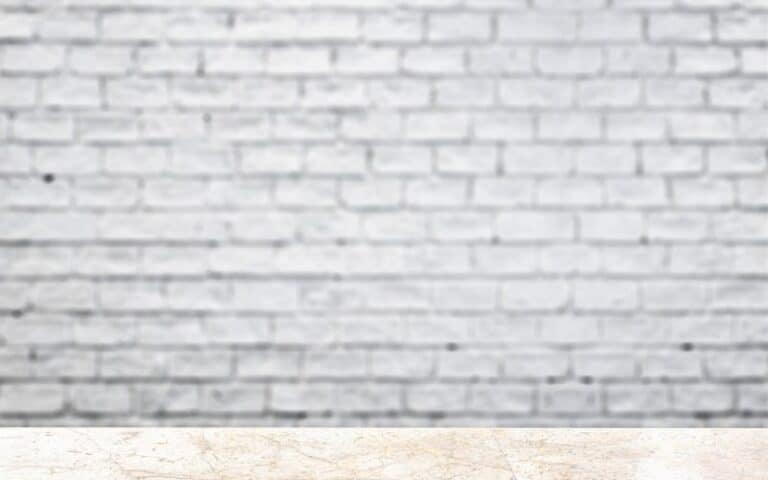A Smooth and even ceiling plays a very important role in the overall aesthetic of your home.
Drywalls are a top choice for ceiling boards because of their cost and ease of installation, but their visible seams can sometimes be a turn-off.
Seams are gaps where a drywall meets another drywall or a wall. If a seam is visible, it can affect your ceiling’s aesthetics.
You can fix visible Drywall Seams by performing repairs on the drywall panel or replacing them. Drywall seams can be visible because of an incorrect finish, sagging due to foundation setting, or humidity issues. Hence, the procedures for fixing visible drywall seams will vary based on the cause of the issue.
In this article, I will explain the reasons for visible drywall seams and the methods you can employ to fix them, irrespective of whether you are a professional or a regular homeowner.
Ready for a Drywall Quiz?
Why are Drywall Seams Showing on my Ceiling?
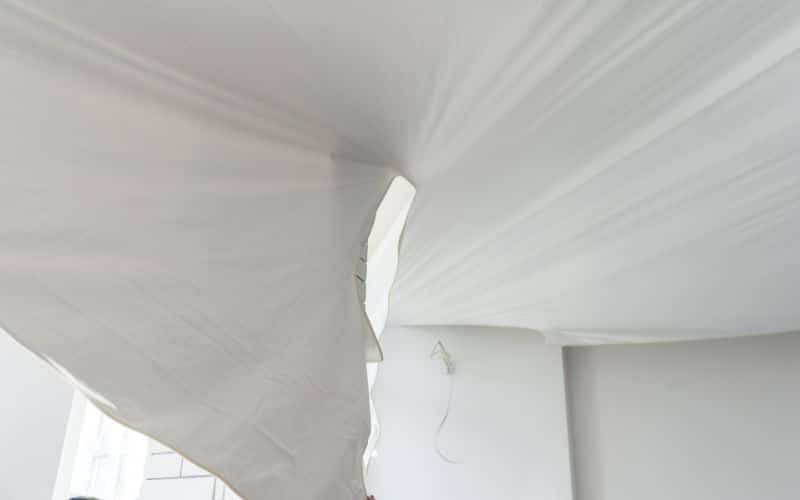
The seams of drywall ceilings be visible if there are problems like poor drywall finish, mismatching, foundation set, and high humidity.
Drywall is an important building material used to overlay the surface of internal and external walls and ceilings of buildings.
Properly installed drywall is indistinguishable from a smooth and seamless plaster surface.
If your drywall seams are visible, it means there is a problem either with its installation or the structure.
Below are the most common reasons why your drywall seams are visible.
#1. Poor Finishing
A poor drywall finish is the most common reason its seams are visible. All drywalls have gaps between adjacent boards, and these gaps require finishing after installation.
The finishing strengthens the drywall and hides the seams of the Drywall. If your drywall has a poor finish, you can see the seams of the drywall when you shine a light on it.
Poor drywall finishes range from improper drywall tape placement, over-sanding, and insufficient drywall mud to incorrect drywall placement.
#2. Drywall Mismatch
If you use different sizes of drywall on your ceiling, it can cause the seams to show. Drywalls can have dimensions ranging from ¼, ⅜ inch, and ½ inch.
If you mix drywall with different thicknesses, gaps in adjacent boards will make seams visible.
The thickness of the designs and the impression on the surface of the Drywall can also make the seams more apparent and visible.
#3. Foundation Setting
Homeowners and contractors usually ignore the type of foundation a building has when installing drywall walls, but it can play an important role in keeping your drywall seams hidden.
No matter how strong and sturdy a foundation is, it will move(set) by a few millimeters or centimeters every year.
If your home foundation sets, it might do so unevenly, and that can put undue strain on the drywall ceiling and cause it to flex, exposing the seams.
#4. Humidity Changes
The humidity of your room can affect the visibility of the seams in your drywall ceiling.
Water is notorious for making opaque objects slightly transparent, and this can cause the seams of your drywall ceiling to be visible.
Although drywall is usually water resistant, it isn’t completely waterproof and will get soaked and expand when exposed to water.
The swelling, accompanied by dampness, weakens the finishing on the drywall and can cause it to tear or deform after a few wet and dry cycles, exposing your seams.
Your drywall can get wet from high humidity, leaking pipes, or a torn roof. You have to ensure you rectify these problems before performing repairs.
Drywall Seams Showing in Ceiling
You can stop the seams of your Drywall from being visible by redoing your drywall finish, changing the drywall boards, and reducing humidity.
Note that the problem causing your drywall seam to become visible influences what you must fix.
You can stop the seams of your Drywall from showing by doing the following.
#1. Poor Finish Fix
Poor drywall finishing is usually apparent at a glance because of the visible and uneven seams, cracks, or bulges that disrupt the surface of the Drywall.
You can know if your Drywall has a poor finish and if it has any of the following characteristics.
- Visible seams.
- Excessive drywall mud.
- Insufficient drywall mud.
- Improper sanding.
- It doesn’t have mesh or paper tape.
Fixing a poor drywall finish is usually easy, and it requires you to perform a few steps.
- Remove the former finish by sanding or stripping.
- Apply good paper tape to the seams.
- Mix the correct amount of joint compound/drywall mud and apply it over the tape.
- Sand the excess mud away until you get a good and even finish.
- Paint the surface to match.
Before you do this, note that if you just had your drywall done by a contractor and they did a poor finish job, you should notify them immediately so they can fix it.
#2. Drywall Mismatch Fix
If your seams are visible because of a drywall mismatch, you need to re-finish the surface of the drywall or replace the drywall in its entirety.
Drywalls that are thicker will not join well with those that are smaller. It is best to seek professional advice before performing any repairs.
#3. Foundation Setting Fix
There isn’t much you can do to stop a building foundation from setting and displacing a few drywall ceilings. Luckily foundation setting is a slow process that takes years.
If the shifting of your foundation makes your drywall seams visible, you can re-finish them to hide the seams or adjust the drywall to compensate.
The fix for foundation-setting-induced seam visibility involves.
- Re-finishing the ceiling drywall
- Replacing cracked drywalls
- Adjusting hogging or sagging drywalls.
#4. High Moisture Issue Fix
For Drywall to get wet and soaked, it has to be exposed to a lot of water from the atmosphere as vapor or from the earth as a liquid.
For places with high humidity, you have to reduce the exposure of the drywall ceiling to damp air, either with the help of an AC unit or a dehumidifier.
If your drywall seams are showing because the Drywall is getting wet, you have to cut off the source of the water.
Leaking roofs and plumbing are the two major sources of moisture that wet ceiling boards; ensure you repair these issues to prevent damage to your drywall ceiling.
So to fix drywall seams, you can either redo the finish or replace the drywall. If you don’t know which to opt for, the table below will help you decide.
Below is a table comparing Refinishing drywall with visible seams or replacing the old drywall with a new one.
| Re-finishing Old Drywall | Replacing the Old Drywall |
|---|---|
| Re-finishing uses fewer materials and saves money. | Replacing old Drywall uses more materials and is more expensive. |
| Re-finishing doesn’t require much skill. | Replacing Drywall doesn’t require expertise. |
| Re-finishing old Drywall with visible seams isn’t very durable. | Replacing old Drywall with a new one has very high durability. |
| Re-finishing might not affect the visibility, especially if mismatched drywalls cause it. | Replacing the old Drywall is more likely to prevent the seams from being visible. |
How to Hide Drywall Seams at Installation?
You can hide your drywall seams at installation using good mesh tape, applying the correct amount of drywall mud, and giving enough space between seams.
The cost of building and maintaining houses is rising yearly, and properly hiding your drywall seams upon installation is the best at saving you money.
Here are the things you can do to hide drywall seams upon installation.
- Use a mesh or preferably drywall paper tape while installing your drywall.
- Make sure to allow adequate drywall clearance so the drywall doesn’t sag or hog after you install it.
- You must apply the correct drywall mud layers, ensuring you don’t apply a too thin or thick mixture.
- Secure the drywall to studs properly.



